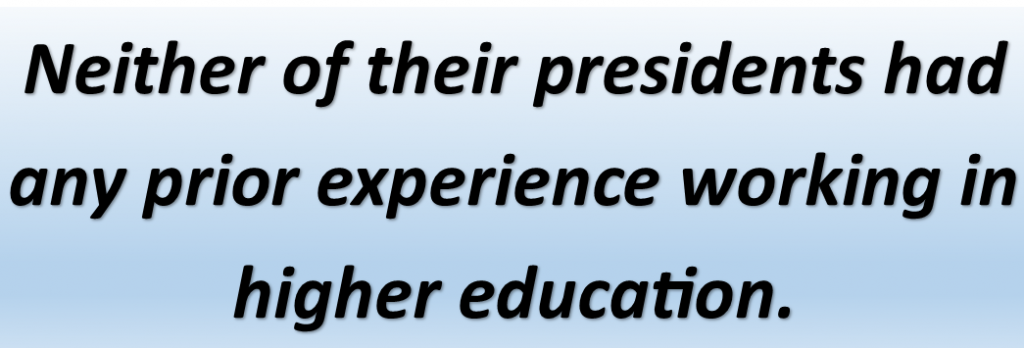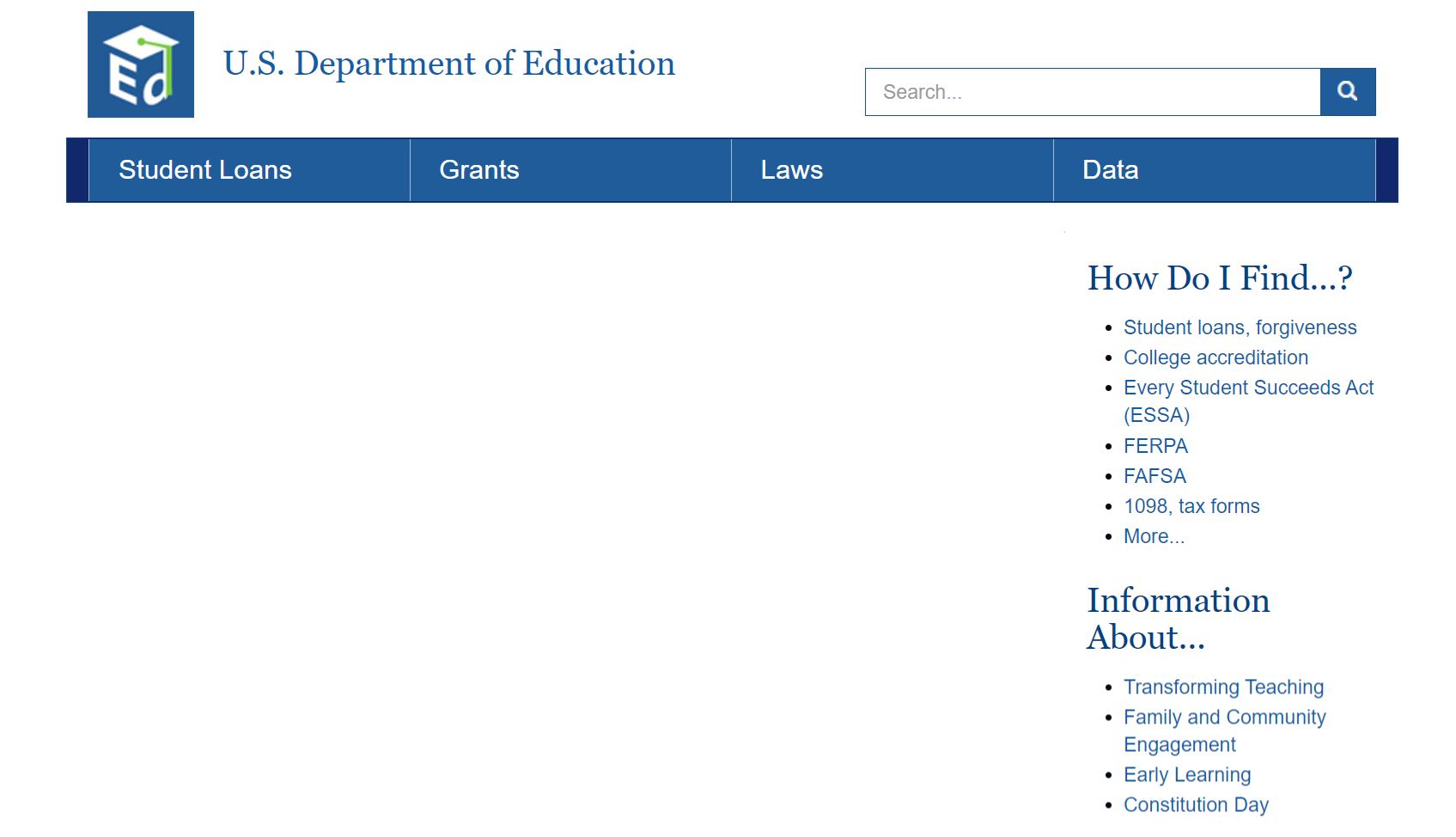Vatterott College couldn’t have found a better partner than the Education Corporation of America (ECA), according to its president Rene Crosswhite. In a press release, she stressed that schools under the umbrella of Vatterott Educational Centers “…will be strengthened through this partnership for the benefit of our students. We believe the acquisition will provide a bright future for VEC, and it should be relatively seamless for faculty, administrators and students.”
That was January 11, 2018. The acquisition didn’t happen, and Vatterott closed its doors without warning on December 17th.
Most of the students, faculty and staff at the 17 Vatterott campuses located across the Midwest learned of their school’s closing when they arrived on campus; others heard about it from friends and colleagues as the news began to spread like wildfire. They weren’t the only ones who were caught off-guard – VEC notified the U.S. Department of Education and various state departments of higher education of the immediate closures on that same day.
In its notification letter to students, Vatterott officials laid the blame at the feet of the federal government citing, “…the U.S. Department of Education recently decided to significantly increase the restrictions on Vatterott’s participation in the federal financial aid programs.” The letter went on to say that as a result of the USDOE’s decision, Vatterott was unable to continue to operate, and was prevented from completing its planned sale to the ECA.
But there are two problems with Vatterott’s version of the story.
First, despite repeated warnings over several years, they lost their accreditation due to poor academic quality and financial instability.
Effective December 5, 2018, the Accrediting Commission of Career Schools and Colleges (ACCSC) voted to withdraw Vatterott’s accreditation. However, this came as no surprise to Vatterott administrators – they had been well aware of their accreditor’s concerns for quite some time. VEC leadership had been given a formal warning by the ACCSC as early as December 2016 due to excessive turnover in management and student achievement outcomes across multiple programs that continued to be below that regulating body’s benchmarks.
A system-wide warning from the Commission was issued in February 2017, followed by another notice of continued warning in August of that same year. Based on abysmal student graduation and employment rates, the ACCSC made the decision in November 2017 to force the Vatterott Berkley, Missouri campus to stop enrolling students in one program and to cap the enrollments of four others. Effective December 31, 2017, the St. Joseph, Missouri campus closed. In each case, the U.S. Department of Education, as well as the departments of higher education in each of the states where Vatterott Educational Systems, Inc. operated were notified of the accreditor’s concerns.
By May 2018, the situation had worsened to the point that the Commission made the decision to move the entire Vatterott system from “warning” to “probation” status, citing continued low student achievement, high management turnover, and financial instability concerns. On June 8, 2018, two campuses in Iowa and Kansas closed.
Finally, the decision was made to withdraw Vatterott’s accreditation during the ACCSC’s December 2018 meeting. According to the notification letter sent to the institution, Vatterott administrators could have chosen to appeal the decision and get serious about making necessary improvements. Instead, they decided to cease operations and blindside their students, faculty, and staff.
Vatterott and the ECA Lose Their Accreditation
Second, the Education Corporation of America (ECA), which was planning to purchase Vatterott, lost its own accreditation at nearly the same time, was denied initial accreditation by another agency, and suddenly shut down its campuses, leaving approximately 20,000 students and thousands of faculty and staff out in the cold. The reason? Poor academic quality and financial instability.
The ECA was a parent company of Virginia College, LLC, which operated 69 campuses in 18 states as Virginia College, Brightwood Career Institute, Brightwood College, Ecotech Institute, and the Golf Academy of America; all had been accredited under the Virginia College, LLC umbrella by the Accrediting Council for Independent Colleges and Schools (ACICS), a regulatory body that specializes in putting its seal of approval on for-profit institutions. It should be noted that this body has faced its own set of challenges, with the Obama administration removing federal recognition of ACICS as an accrediting agency due to lax and non-compliant quality assurance practices, although Education Secretary Betsy DeVos permanently reinstated its federal recognition in November 2018.
Because the future of ACICS was in jeopardy, the bottom line of institutions accredited by that agency would be negatively impacted, meaning at some point students enrolled in their programs would be ineligible to receive federal financial aid. Very few students enrolled in the various entities owned by the ECA could afford to attend without receiving significant financial aid and ECA was dependent on those tuition dollars to keep the doors open and the lights on. To that end, ECA made the decision to seek accreditation through another quality assurance agency that serves for-profit institutions– the Accrediting Council for Continuing Education & Training (ACCET). However, that effort was unsuccessful and resulted in ACCET denying ECA’s initial accreditation, citing the institution’s non-compliance in 19 standards covering a broad spectrum pertaining to academic quality, financial procedures, and organizational structure.
Two months later, ECA leadership received a show-cause directive from its original accrediting body ACICS, after it learned of the company’s dire financial problems that had resulted in lawsuits and possible bankruptcy. After being unable to make a convincing argument that it was financially stable, ECA’s accreditation was withdrawn by suspension. The next day, the ECA notified the USDOE that it planned to close its doors at all campuses by December 18.
Similar to Vatterott, in his notification letter to students ECA President & CEO Stu Reed blamed the company’s woes on added requirements placed upon it by the USDOE, although he did not elaborate on what those additional requirements were. He went on to say that those requirements, “…resulted in an inability to acquire additional capital to operate our schools.”
Vatterott and the ECA: Two Failed Companies, Many Similarities
Through its acquisition by the ECA, president Rene Crosswhite stated that Vatterott’s programs would be strengthened, and that its students would benefit. After all, their programs, procedures, and organizational structure were alike in a lot of ways, making it a relative seamless transition for all. It turns out that the two for-profit entities shared other similarities: Poor management, high turnover rates, low academic quality, unacceptable student success rates, and roller coaster-like financial instability.
There is rarely a single reason for the kind of systemic failure experienced by Vatterott Educational Centers and the Educational Corporation of America. Managing campuses in multiple states can be challenging for a lot of reasons, not the least of which is complying with programmatic and quality assurance practices required within each state entity. Regulations across state departments of higher education can vary widely and are subject to change as new laws are written and statutes approved. However, both institutions willingly made the decision to operate multiple campuses across multiple states. Furthermore, along with every other institution of higher education in the nation, they were responsible for monitoring, understanding, and complying with federal regulations which are also subject to periodic review and change. In other words, laying blame at the feet of the federal government is not a viable excuse for the failure of VEC nor ECA.
Red Flags
In addition to similar concerns cited by their respective accreditors, these two institutions shared something else in common:

President Crosswhite: According to Vatterott President Crosswhite’s LinkedIn page, she has a master’s degree in Health Administration and is a licensed CPA. Ms. Crosswhite worked primarily in financial oversight for various hospitals before joining Vatterott Educational Centers in 2013 as its Chief Financial Officer; she held that post until March 2016 when she took over as President. Ms. Crosswhite described her role by stating, “As President, I am responsible for all aspects of the college including Academics, Operations, Marketing, Regulatory, Compliance, Financial Aid, Information Technology and Finance.” As stated previously, Vatterott received its first formal warning from its accreditor in December 2016, three years after Ms. Crosswhite joined the company’s leadership team.
CEO Reed: ECA’s chief executive Stu Reed holds a master’s degree in management. He joined the Educational Corporation of America in October 2014 as Chief Operating Officer and served in that capacity for four months before transitioning to CEO in January 2015. Prior to that, Mr. Reed held positions at IBM, Motorola, and Sears. His LinkedIn page lists Management, Process Improvement, and Customer Satisfaction as his top skills.
So, Who’s to Blame?
Executive Level Leadership
President Harry S. Truman had a sign on his desk in the oval office with a message as applicable today as it was during his administration. That sign said, “The Buck Stops Here.” Thus, the responsibility for any institution’s success or failure lands squarely on the shoulders of its executive leader. While numerous faculty and staff may be tasked with specific roles within an organization, the president or CEO is the person ultimately responsible for that institution’s overall performance outcomes. However, there are other entities who could have done more to support both Vatterott and the ECA as problems began to be revealed.
Accrediting Bodies
The primary role of accrediting bodies such as the Accrediting Commission of Career Schools and Colleges (ACCSC), Accrediting Council for Independent Colleges and Schools (ACICS), and Accrediting Council for Continuing Education & Training (ACCET) can be summed up with two words — quality assurance. By granting an institution accreditation, these bodies are placing a seal of approval on that institution’s programs, faculty, financial stability, and outcomes. In essence, accreditors serve as consumer watchdogs to protect students and to ensure that institutions provide high-quality educational experiences by meeting specific standards. It is the responsibility of accreditors to hold institutions accountable when those standards are not met.
In the case of Vatterott Educational Centers and the Educational Corporation of America, it appears as though ACCSC and ACCIS accountability mechanisms were not effective in protecting students and ensuring high-quality educational experiences. These institutions were allowed to operate for years despite significant concerns and as a result, thousands of students trying to make a better life for themselves and their families now find themselves deep in debt with credits that may or may not transfer to another school. Betrayal of trust seems to be an understatement in this context.
Federal and State Departments of Education
Governmental and regulatory agencies must also share responsibility for the failure of these two institutions and others like them. After all, it is those very agencies that grant authorization to operate after an institution submits an application and completes a lengthy review process. Earning state program approval requires yet another layer of scrutiny. Typically, state departments of higher education and the U.S. Department of Education require annual reports that provide updated information about an institution’s programs, such as enrollment, retention, and graduation rates; employment data, and student performance on examinations required for state licensure or certification.
What accountability measures did the USDOE and each state department of higher education have in place to monitor the quality of Vatterott College and all the various colleges operating under the ECA umbrella? Since each was approved to operate by those entities, do they share no responsibility in protecting students who enroll?
USDOE’s Recommendations
Per the directive of Education Secretary Betsy DeVos, the USDOE recently published two white papers targeted at accreditation and higher education. However, in Rethinking Higher Education, many of the department’s recommendations may actually do little for quality assurance – some focus on empowering institutions and innovators to an even greater extent, such as:
- Provide regulatory relief by removing overreaching regulatory burdens, revising costly or ambiguous regulations, and providing a greater understanding of Department expectations concerning regulatory compliance;
- Carefully construct accountability measures that take into account the unique mission of an institution and the needs and goals of its students;
- Ensure that accreditors evaluate institutional quality in the context of the students an institution serves and the institution’s unique mission;
- Reform the accreditation system to promote change and innovation, to allow accrediting agencies to accommodate educational innovation, and to reduce the cost of quality assurance; and
- Identify new ways to expedite approvals for new programs and program modifications in order to keep pace with changing technologies and employer demands.
While the students at most colleges and universities could benefit from such reforms, predatory institutions where turning a profit is the top priority could take advantage of the latitude offered by the USDOE in these recommendations.
Common Sense Solutions Needed
Unfortunately, very little can be done to help the thousands of students who put their trust in the schools run by Vatterott Educational Centers and the Educational Corporation of America. The USDOE may or may not forgive their student loans, and the various state departments of higher education may or may not assist them with finding other schools who will accept their credits for transfer. For now, the extent of support seems to be mostly limited to posting a fact sheet about the school’s closure along with referral to numerous links and phone numbers for students to wade through on their own. One state site encourages these students to “explore their options for continuing their education” while another provides a link to that state’s Attorney General’s office if students wish to file a formal complaint. This is unacceptable, but a few common-sense steps could start to make a difference. For example:
Learning from Those Who Are Most Impacted
Lawyers, governmental staffers, accreditors, and political leaders should not be making regulatory recommendations and decisions without truly understanding how the lives of students, faculty, businesses, and communities will be impacted. Instead, a “best practice” recommendation is to host an ongoing series of roundtable discussions about student and workforce needs, academic quality indicators, consumer protection, etc. These discussions need to involve all stakeholder groups, and their input should be taken seriously. In many instances, those “in the trenches” often have the best insights and solutions.
Identifying the Root Cause
Since 2016, approximately 173 colleges and universities have shut their doors; 75 were for-profit institutions. We can and must do a better job of ensuring the fiscal health and academic quality of our colleges and universities. In order to do that, we’ve got to take a serious look at each institution and determine the reason(s) for their failure. After identifying patterns of failing institutions, agencies can create a set of red flags to identify at-risk schools. For example:
- Does the school have enrollment quotas?
- Are there open enrollment policies that accept almost all applicants, regardless of whether students demonstrated a propensity for success?
- What are the student retention and graduation rates? If the rates are poor, are they across all programs, or specific to certain ones?
- On average, must the school’s graduates have to take their state licensure examination more than twice before passing?
- Has the institution had continued high rates of faculty and/or leadership turnover?
- From an employer perspective, does the school prepare its graduates well for their chosen career?
- From an alumni perspective, does the school provide a high-quality educational experience that is relevant and meaningful to their chosen career?
- How much prior experience do executive leaders have working within a similar institution?
Triaging the Wounds of Vatterott, the ECA, and Others Like Them
Accreditors and governmental agencies should do more to hold institutions accountable. Going through an accreditation review or state approval process can be rigorous, but submitting an annual report containing basic information without follow up is simply not effective, as evidenced by the fate of Vatterott and the ECA.
No institution should be allowed to continue to operate poorly for months or years. That approach helps no one – not the institution, not businesses counting on a skilled workforce, and certainly not students. When there are concerns about an institution’s performance, accreditation staff should establish a system to provide guidance and support as needed. A triage model could be implemented based on the level of concern: Cuts and scrapes are easy to take care of, but an institution should never be allowed to digress to the level of intensive care or hospice without significant intervention.
Shared Responsibility, Shared Accountability
Simply stated, all entities should be working together as partners toward achieving successful outcomes. Institutions are responsible for innovations, operations and data-driven decision making with the goals of continuous program improvement. Federal and state departments of education serve as the umbrella for authorizing those institutions to operate, while accrediting bodies must set high expectations, ensure standards are met, and provide assistance to institutions that are struggling. Each entity shares in an institution’s success and likewise, in its failure.
Vatterott and the ECA: KEY EVENTS
Vatterott and the ECA: RELATED RESOURCES
OTHER IMPORTANT SOURCES
###
About the Author: Dr. Roberta Ross-Fisher has expertise in higher education quality assurance, educator preparation, and competency-based education. A former public school teacher and college administrator, Roberta is now an educational consultant specializing in the Council for the Accreditation of Educator Preparation (CAEP).
Twitter: @RRossFisher
Email: globaleducationalconsulting@gmail.com
Top image credit: lapertenencia.wordpress.com






